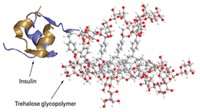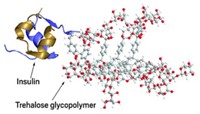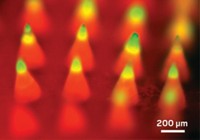Advertisement
Grab your lab coat. Let's get started
Welcome!
Welcome!
Create an account below to get 6 C&EN articles per month, receive newsletters and more - all free.
It seems this is your first time logging in online. Please enter the following information to continue.
As an ACS member you automatically get access to this site. All we need is few more details to create your reading experience.
Not you? Sign in with a different account.
Not you? Sign in with a different account.
ERROR 1
ERROR 1
ERROR 2
ERROR 2
ERROR 2
ERROR 2
ERROR 2
Password and Confirm password must match.
If you have an ACS member number, please enter it here so we can link this account to your membership. (optional)
ERROR 2
ACS values your privacy. By submitting your information, you are gaining access to C&EN and subscribing to our weekly newsletter. We use the information you provide to make your reading experience better, and we will never sell your data to third party members.
Pharmaceuticals
Heparin Mimic Shields Protein Therapeutic
When conjugated to a protein that shows promise for tissue regeneration, a charged polymer protects the protein against heat, acidic conditions
by Lauren K. Wolf
February 25, 2013
| A version of this story appeared in
Volume 91, Issue 8
To protect protein drugs from decomposing in the body, manufacturers frequently modify them with chemical groups such as polyethylene glycol. But the added groups don’t always protect proteins from conditions such as high temperature and low pH. To address this shortcoming, a UCLA research team has designed a new protective group—a polymer arm that mimics the anti-blood-clotting molecule heparin (Nat. Chem., DOI: 10.1038/nchem.1573). The researchers conjugated the new group to a heparin-binding protein called basic fibroblast growth factor (bFGF) via disulfide exchange. When heated to 55 °C for 30 minutes, added to an acidic solution (pH 4.7) for 16 hours, or exposed to a protein-cleaving enzyme called trypsin for 16 hours, the bFGF-polymer conjugate remained intact and active: bFGF was still able to aid in the growth of human skin cells. “The conjugate has the biological activity of native bFGF,” explains team leader Heather D. Maynard. “But unlike bFGF, it doesn’t need to be stored in the freezer before use or used at very high concentrations. These factors are inconvenient for doctors and patients and can increase costs.” Maynard adds that her team is now collaborating with dermatologists to test the wound-healing capabilities of the conjugate.





Join the conversation
Contact the reporter
Submit a Letter to the Editor for publication
Engage with us on Twitter